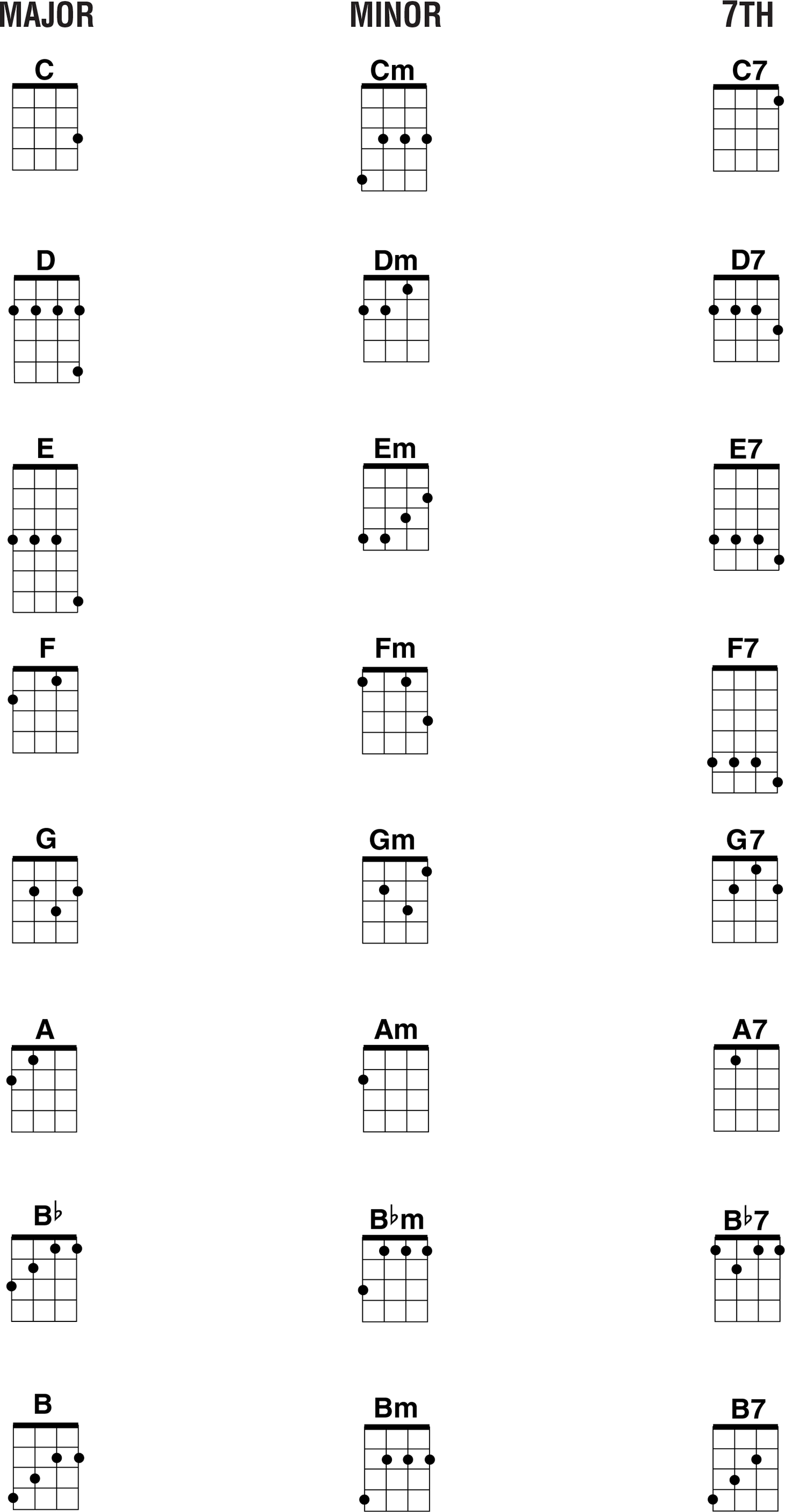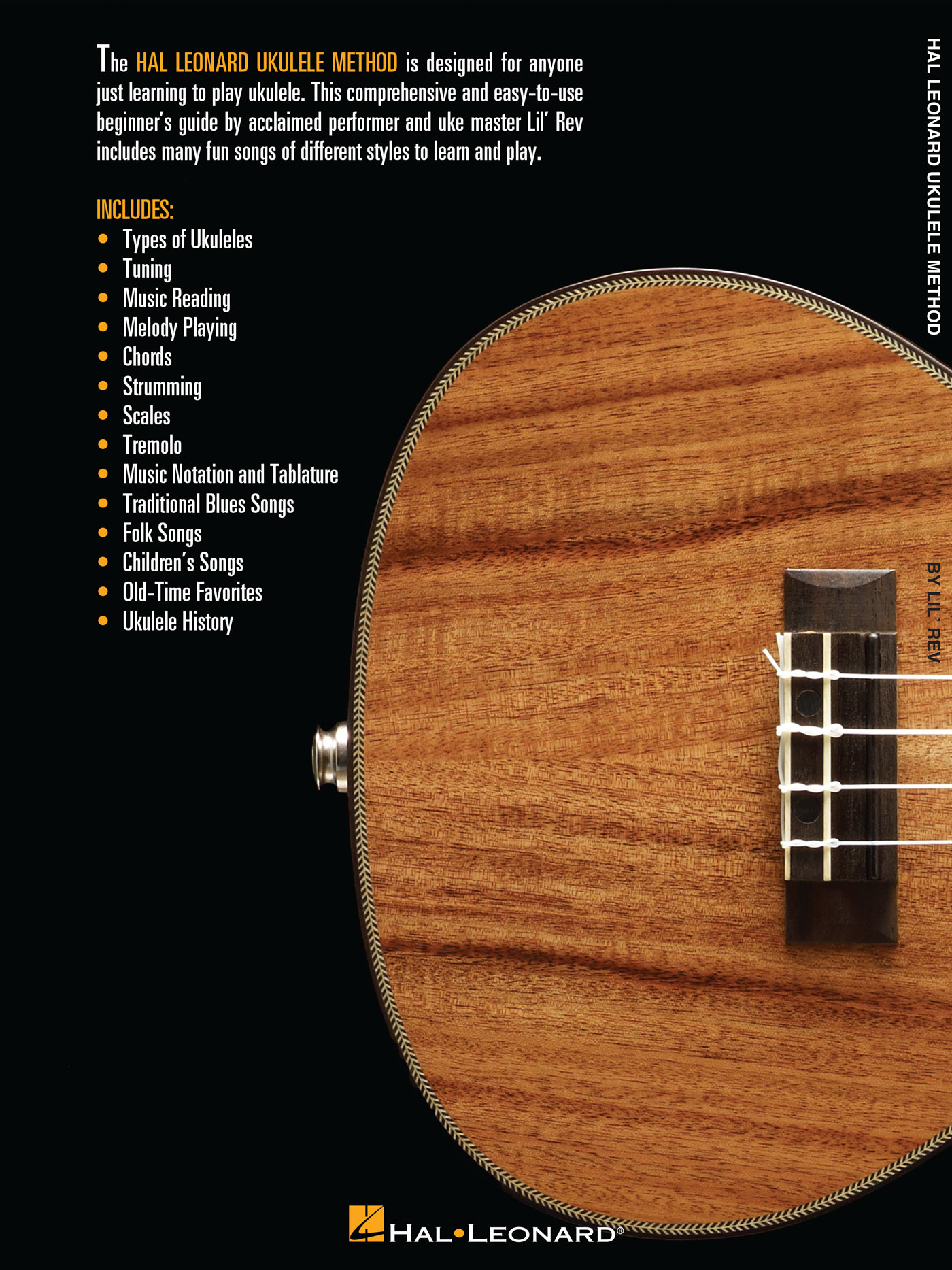PLAYING TREMOLO
Tremolo is a very beautiful and pleasing sound when played on the ukulele. Here’s how to do it:
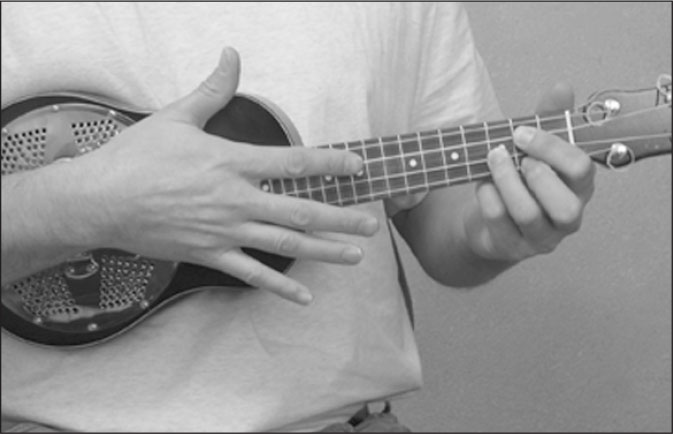 | 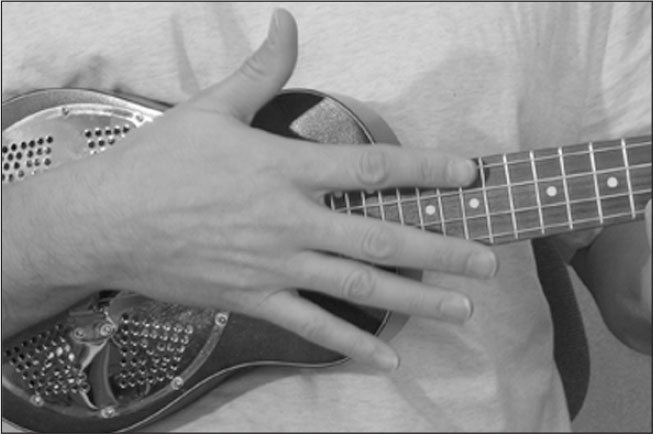 | 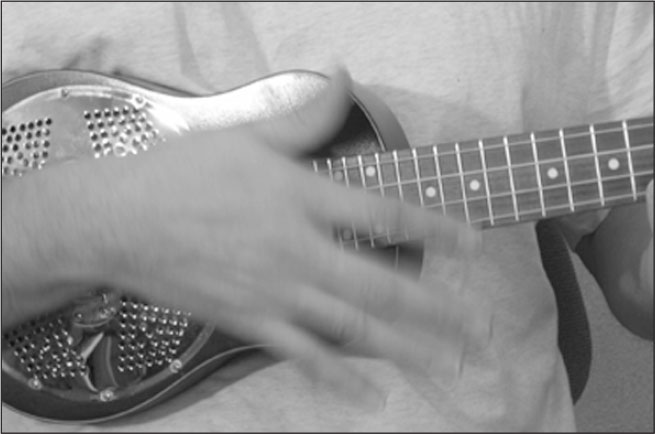 |
| 1. Spread the fingers of your right hand as shown. | 2. Position your pointer over the tenth fret. | 3. Using the pad of your fingertip, gently yet rapidly rub all four strings in a continuous and even up-and-down motion. |
The musical symbol we will use for tremolo is (k).

Go back and review the melody for “Aura Lee.” Once you have it in your head, play this chord progression using tremolo. Notice the new E7 chord. This is just like the D7 chord fingering that you know, but up two frets. There is also another new chord here that is easy to play: Am. Look at the next page for the Am chord fingering. Count “1–2–3–4” for each measure. Then try playing this along with audio below the song.
AURA LEE
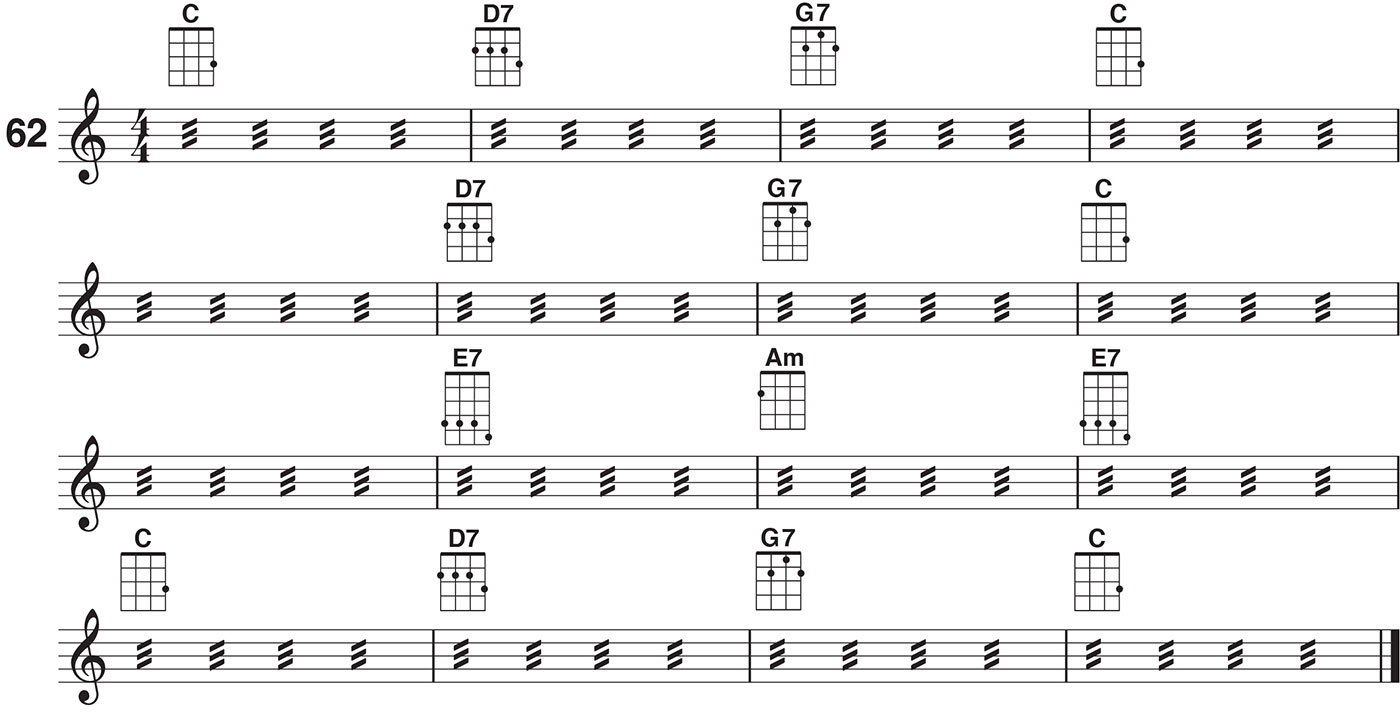

Familiarize yourself with this new chord, and get re-acquainted with the C, F, and G7 chord shapes. Then try playing “Doo-Wop Uke” using tremolo. Work toward keeping the tremolo going smoothly by switching from chord to chord without losing the beat. Remember to use the pad of your pointer finger.
DOO-WOP UKE
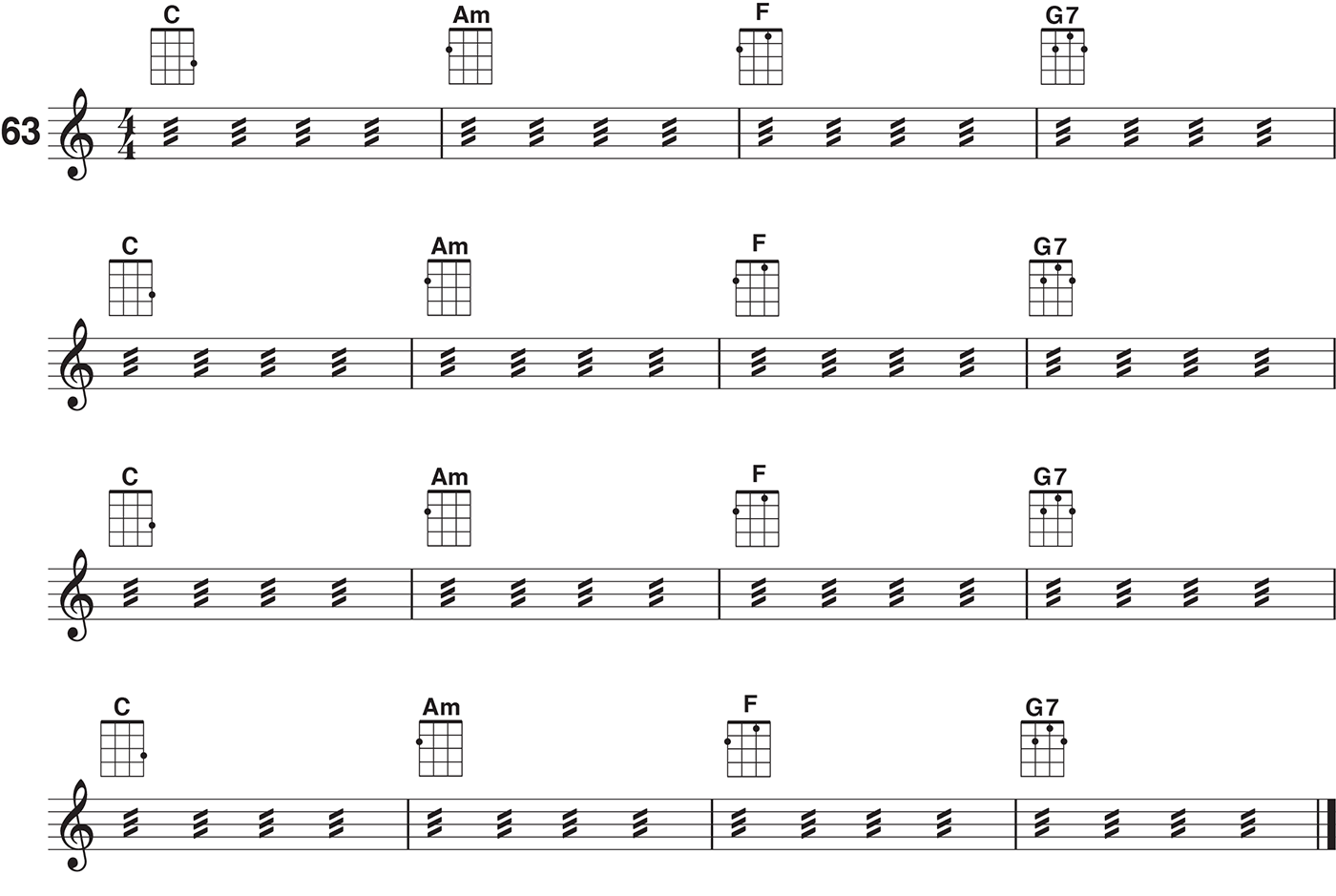
RESTS
Music is made up of both sound and silence. Silence is represented by musical symbols called rests. They are just as important as the notes you play. Each type of note has a corresponding rest of the same name and duration:

Remember to count while you do these exercises.

Sometimes it helps to tap your foot during rests to keep time.
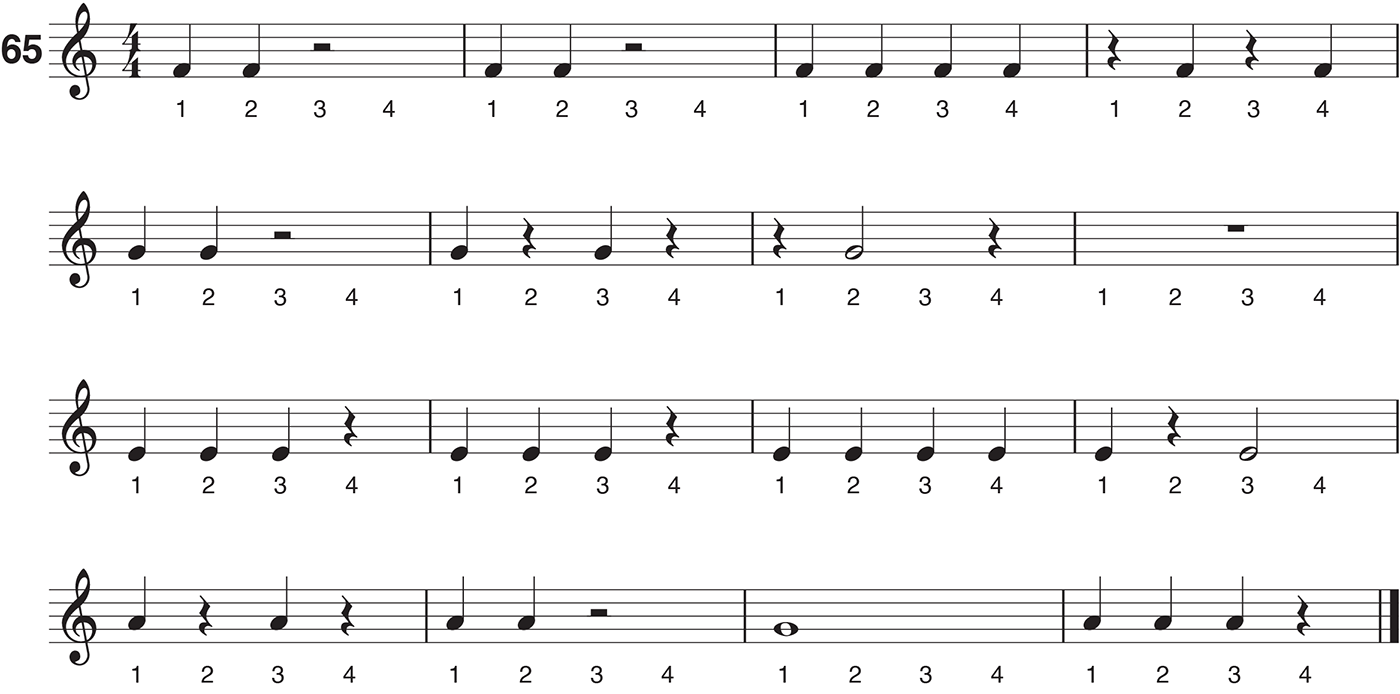
“Goodnight Ladies” contains both quarter rests and eighth rests. Notice the key signature!
GOODNIGHT LADIES
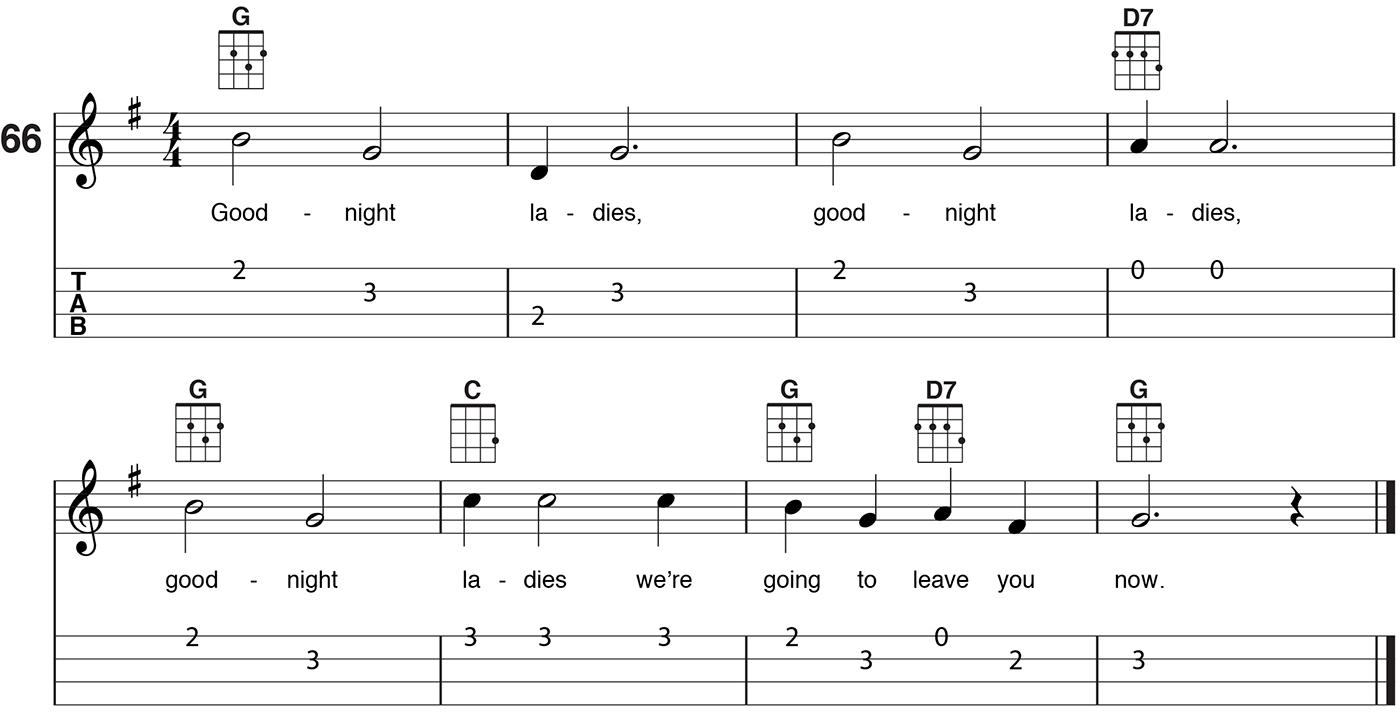
MERRILY WE ROLL ALONG
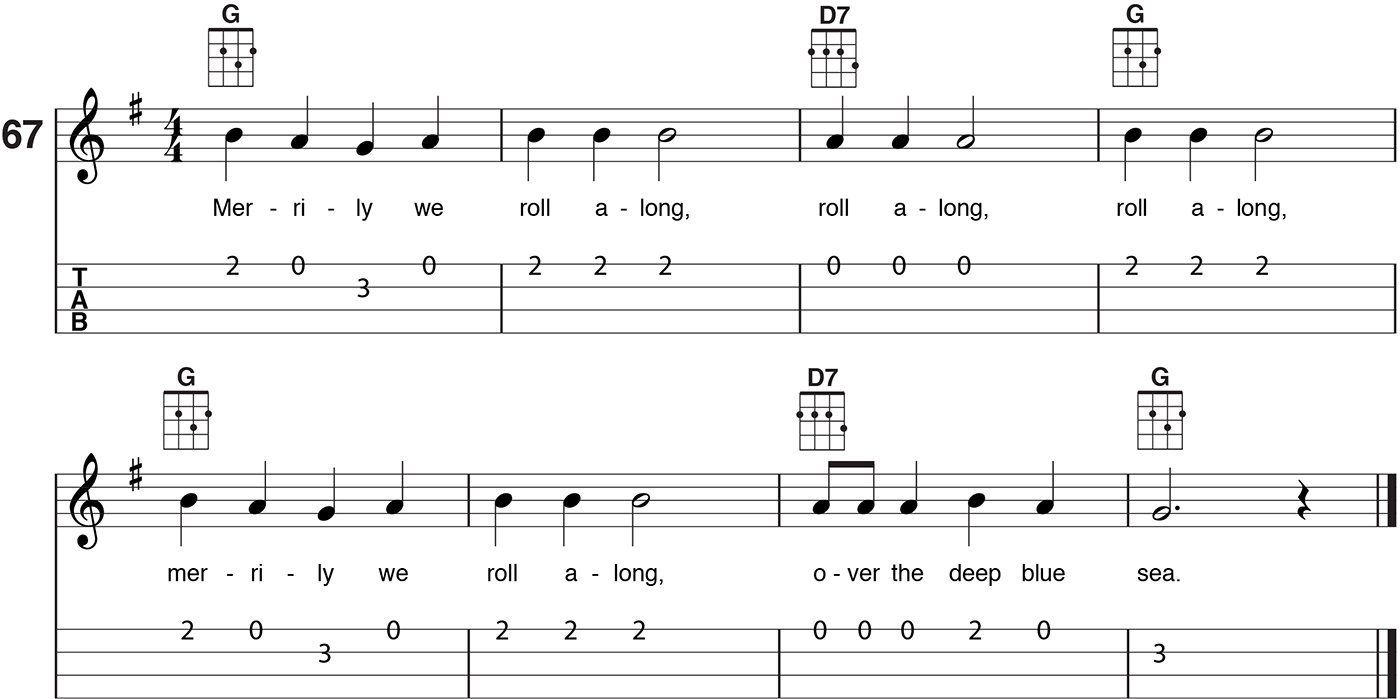
THE E MINOR CHORD FAMILY
Em, Am, and B7 Chords
You already used the Am in “Doo Wop Uke”; now meet its relatives in the E minor family.
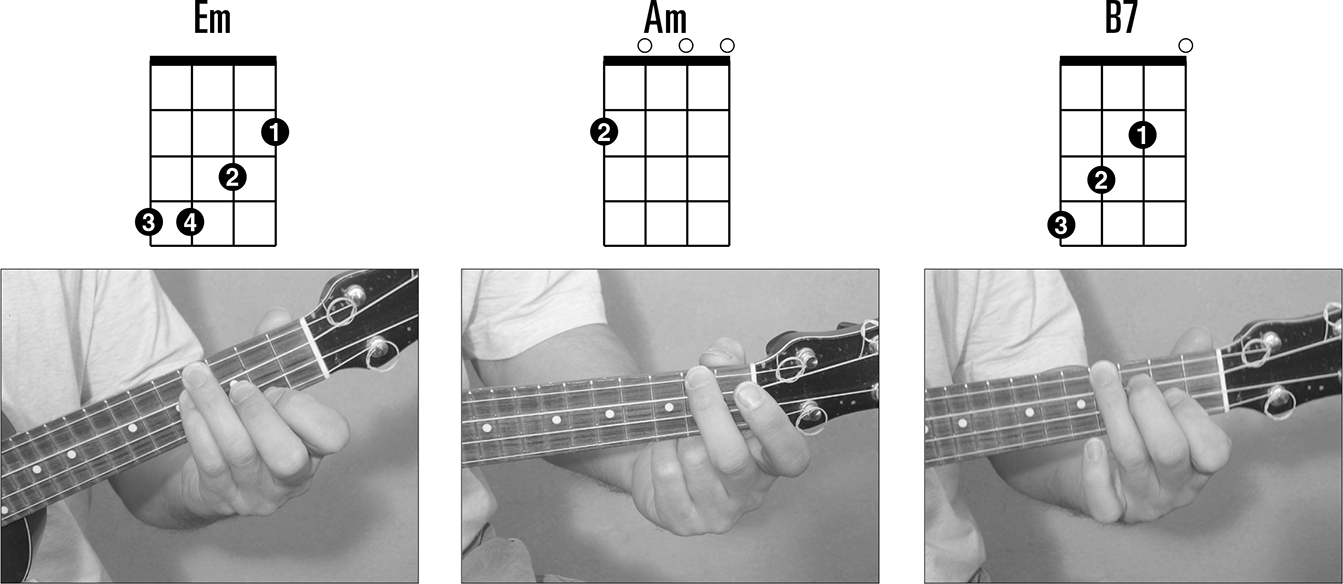
Minor chords offer a nice contrast to the bright sounds of the major and seventh chords we have seen. Some folks describe the sound of minor chords as “spooky” or “sad.”
Let’s start by strumming the Em chord.

Now mix it up with the Am chord.

Try this 8-bar minor blues progression.

Here’s a typical 12-bar minor blues progression in Em. Remember to count “1–2–3–4.” Listen to the different strum variations that are played on audio track #40. Try mixing it up as you play this tune and use several different strum patterns that you’ve learned.
THE HAUNTED UKE BLUES
Blues Progression
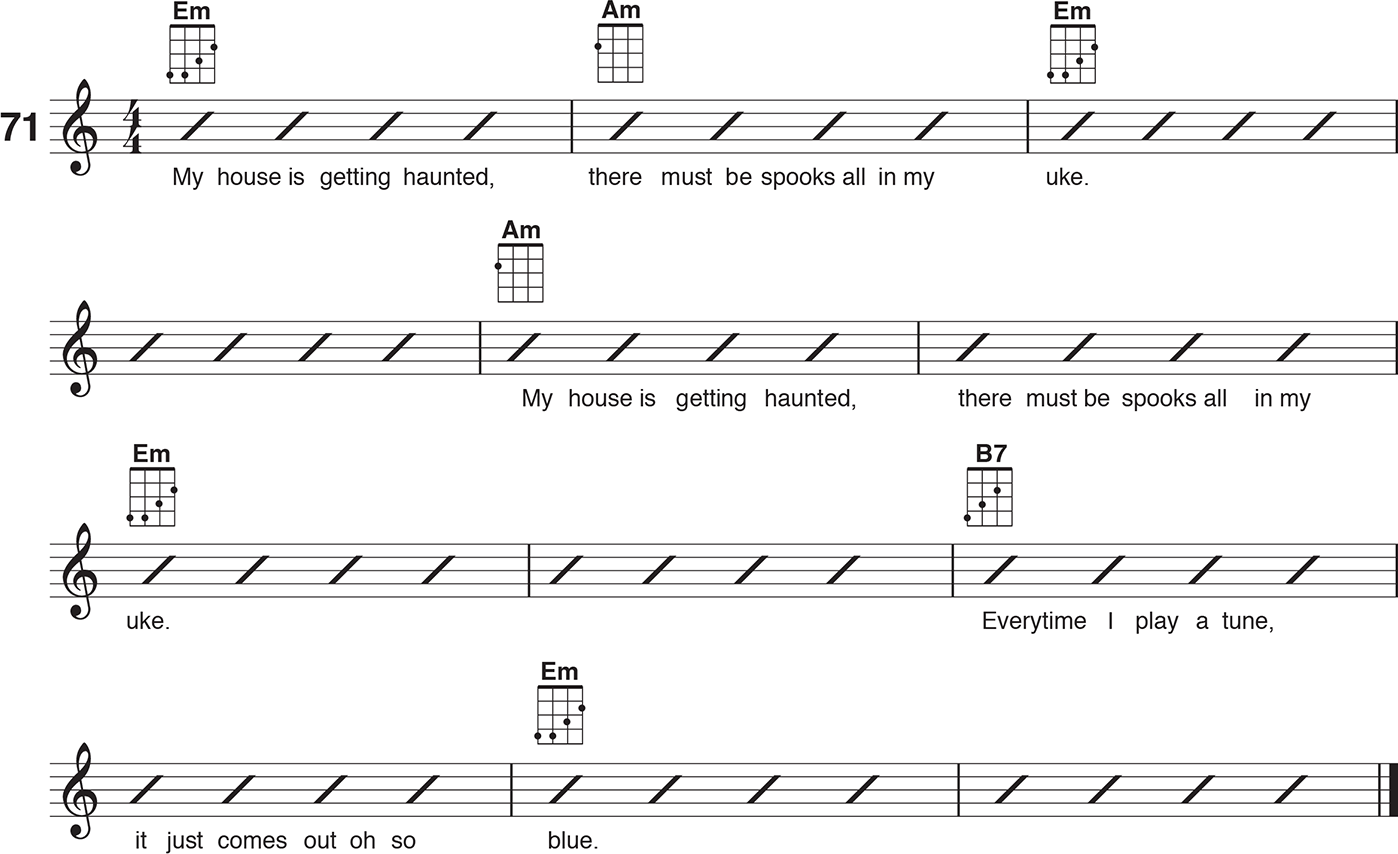
Try picking out this minor melody using your thumb.
HEY, HO, NOBODY HOME
English Folk Melody
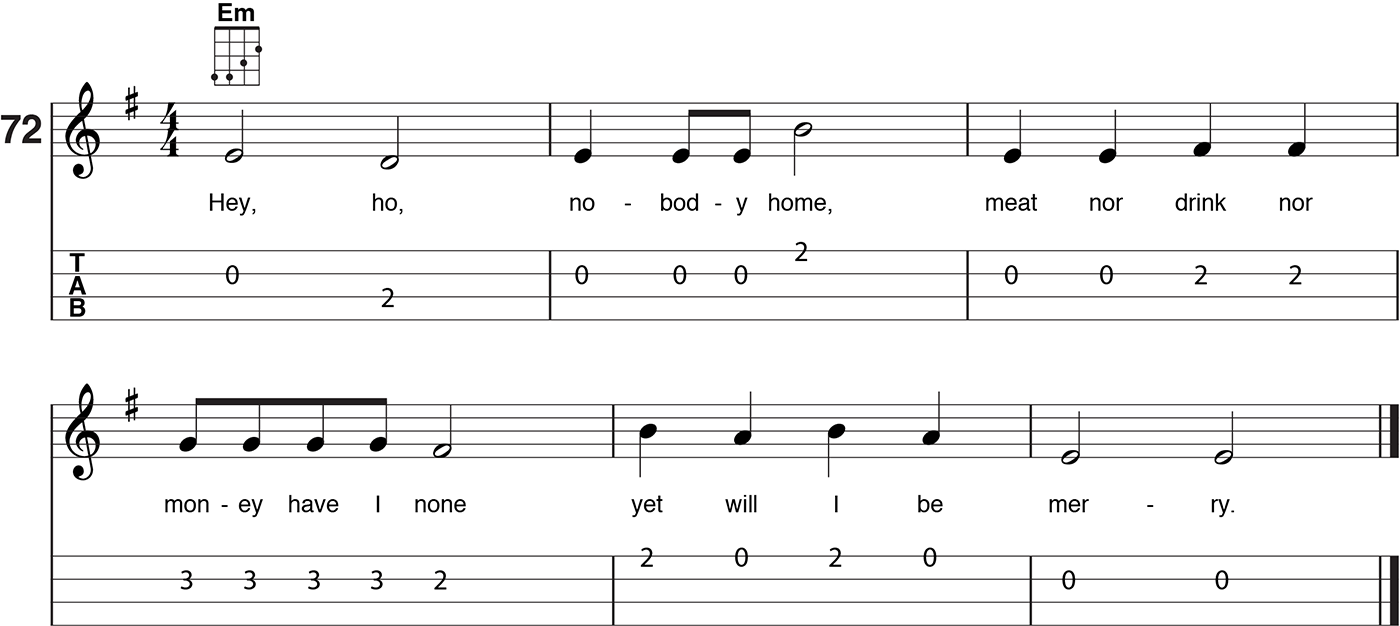
MORE CHORDS
Dm and A7 Chords
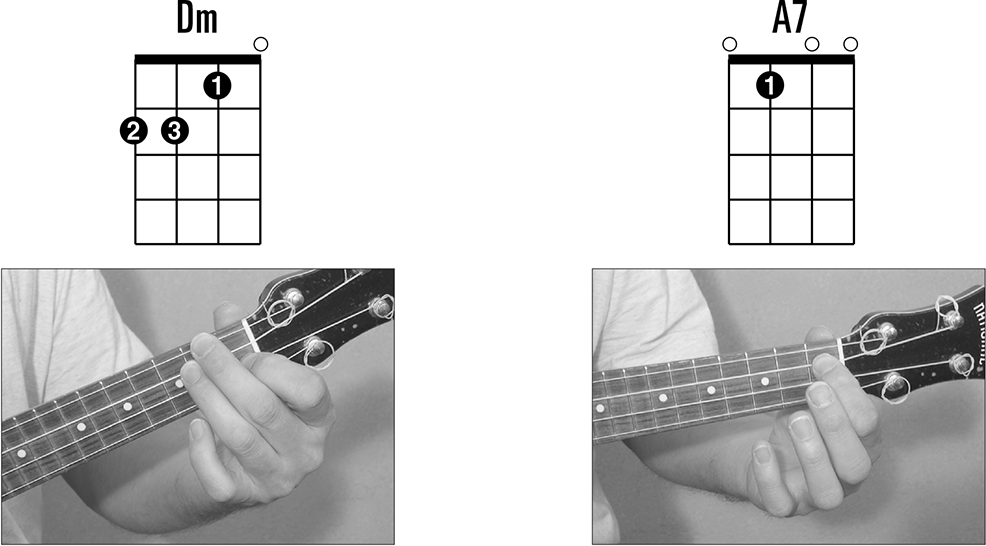
Get familiar with the chord positions shown, then practice changing between the chords.

Now let’s really mix it up!

Here’s a challenge: try changing chords every one or two beats instead of every four. Practice slowly at first and gradually work up to speed.

Now that you’re familiar with the Dm chord, let’s play a minor melody. Go slowly and pay attention to each note’s time value. Gradually work up to playing a little faster. There’s a new chord in “Scarborough Fair” that you haven’t seen yet, the A chord. You can find this chord and many others in the Chord Chart at the back of the book.
SINNER MAN
Traditional Folk
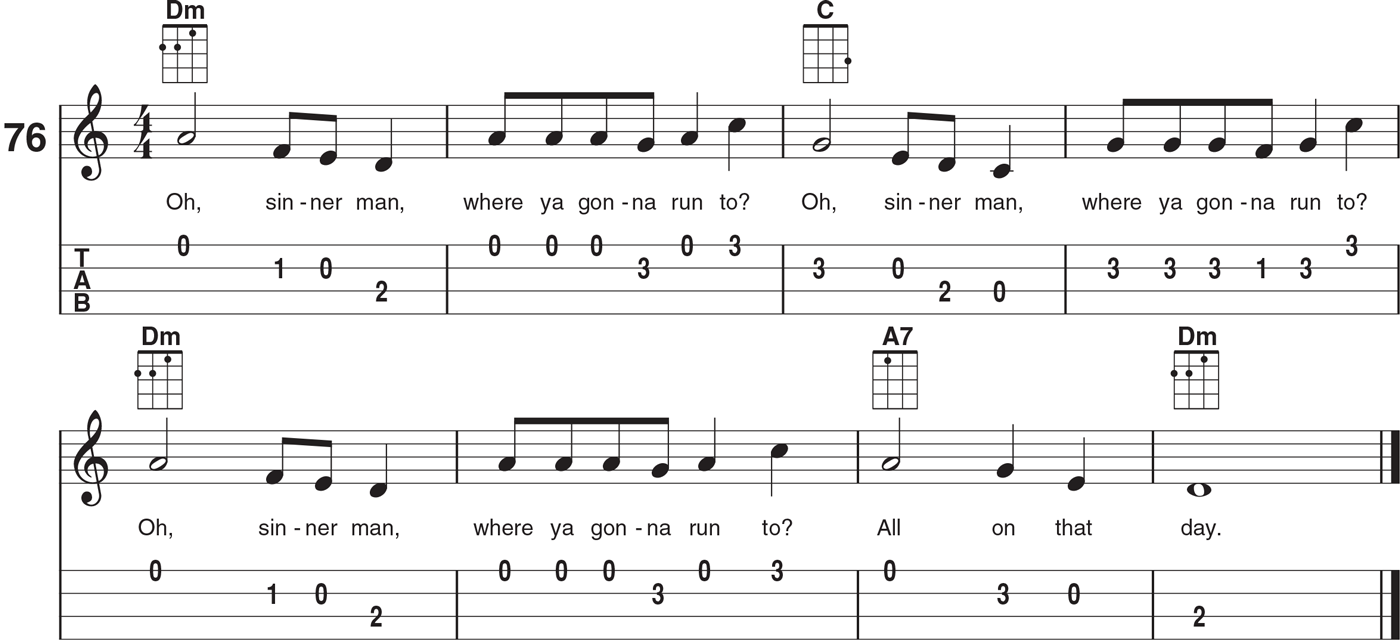
SCARBOROUGH FAIR
Traditional
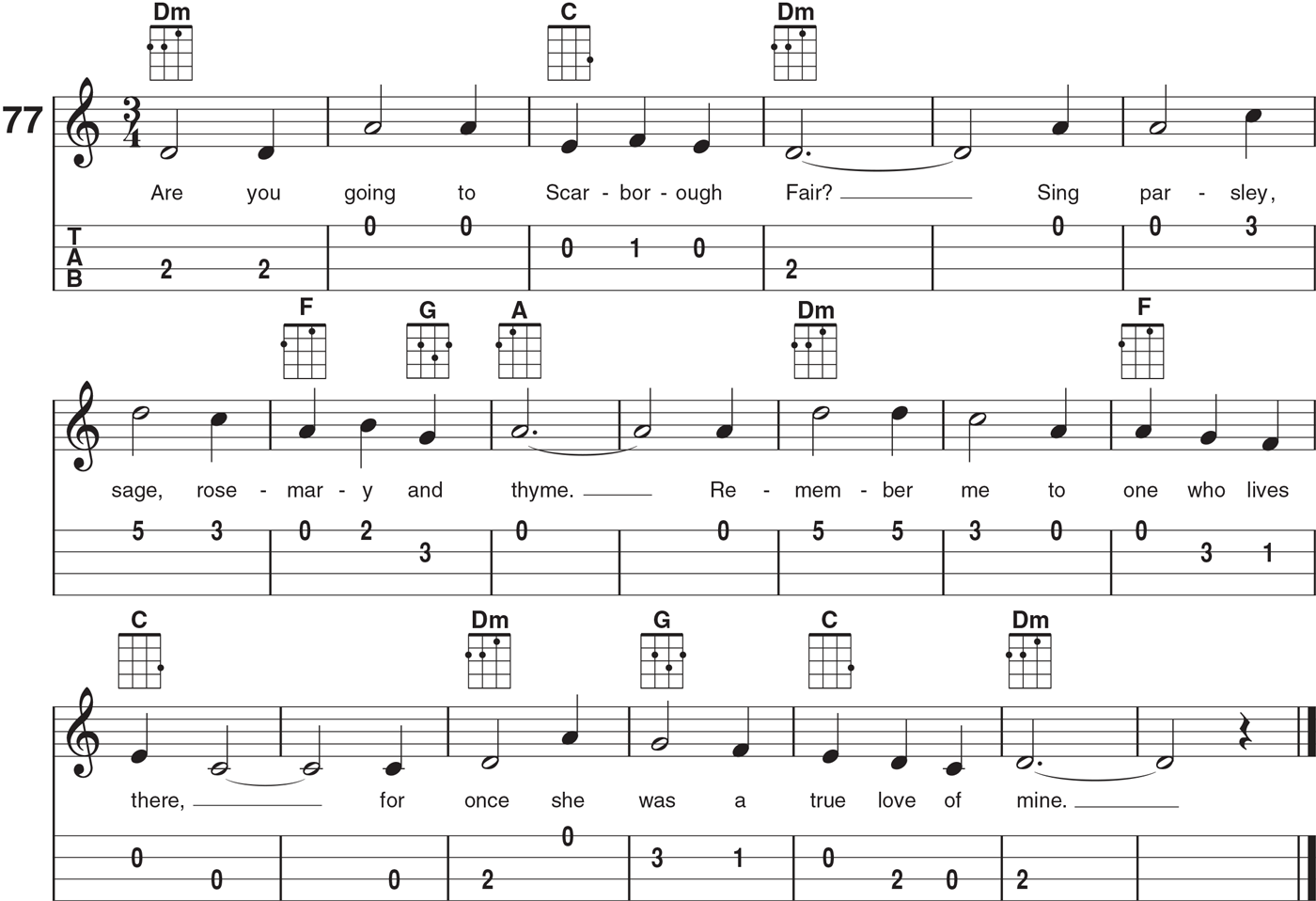
CHORD CHART
Here are all the chords we used in this book, and some other common chords you may encounter in your ukulele adventures.
